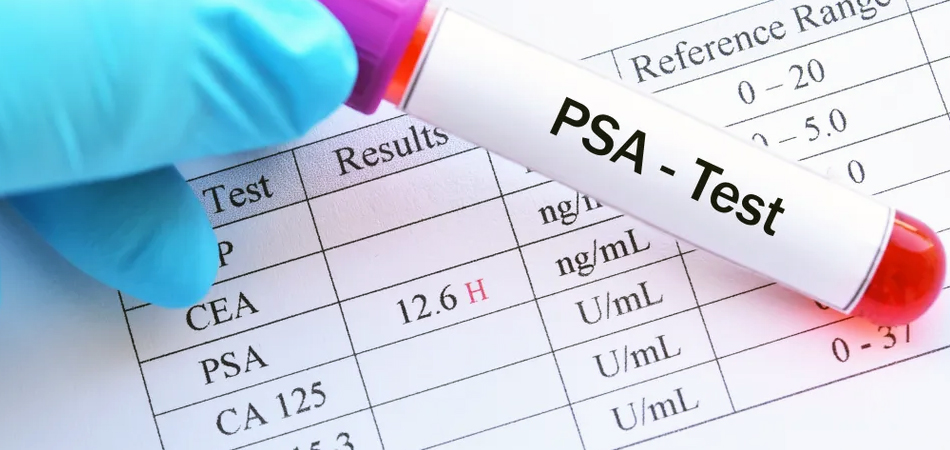Suppose you’re a male, particularly one who is over the age of 50. In that case, prostate cancer is probably on your radar – and it should be – the American Urological Association recommends that men at average risk for prostate cancer begin screenings at age 55. In contrast, those who are at higher risk of developing the disease because a father or sibling was diagnosed with prostate cancer should begin screening as early as 45 years old.
Prostate cancer is the most common form of non-skin cancer in males in the United States, with about 1 out of every 8 men being diagnosed. The good news is that most men diagnosed with prostate cancer do not die from it. Still, prostate cancer is only second to lung cancer as the leading cause of cancer deaths among men in the United States, according to the National Cancer Institute.
There are currently no standard or routine screening tests for prostate cancer. However, two primary methods are used to identify the disease in males. These are the digital rectal exam and the prostate-specific antigen test, more commonly known as the PSA Test.
In this post, we’ll look at the PSA Test, what it means for prostate cancer screening, and the positives and negatives.
What are Prostate Cancer and Prostate Cancer Screening?
The prostate is a male reproductive system gland located just below the bladder and in front of the rectum (the lower part of the intestine). It’s roughly the size of a walnut and surrounds part of the urethra, the tube that empties urine from the bladder. The prostate gland produces fluid that makes up part of semen in males. Prostate cancer occurs when malignant cells, which are abnormal cells that are able to grow and divide uncontrollably, form in the prostate and begin to spread.
Prostate cancer screening includes a group of methods both physicians and patients use to try and identify the possibility of prostate cancer. The prostate-specific antigen (PSA) test is one of the most commonly used.
What is a PSA Test?

A prostate-specific antigen is a protein made within the prostate gland. Most are found in semen, but a small percentage exists in the blood. We know that the chance of prostate cancer increases as PSA levels go up in the blood. However, there is no magic PSA number that indicates for sure whether someone has prostate cancer or not. In other words, it’s a bit of a guessing game, and this can be problematic.
Most doctors use four nanograms per milliliter (4ng/mL) as the benchmark when deciding if further testing via a prostate biopsy is warranted. This is because most men without prostate cancer have PSA levels under 4 mg/mL, and once cancer develops, PSA levels often spike beyond the 4 number.
Why PSA Numbers Can Be Confusing
Using a 4 PSA level as a benchmark may sound like a pretty reasonable standard. However, according to data from the American Cancer Society, there is some pretty big wiggle room regarding PSA Tests.
For example, men with a PSA level between 4 and 10, often referred to as the borderline range, only have a 25% chance of actually having prostate cancer. So, even with an elevated PSA in this range, it is more likely that a man does not have cancer than it is he does. Men who test above 10 have a more than 50% chance of having prostate cancer, which would undoubtedly indicate cause for a biopsy to confirm or deny the presence of cancer.
To make matters even more confusing, about 15% of men who have a PSA Level below four will turn out to have prostate cancer if a biopsy is conducted. So, having a lower PSA level is no guarantee that a man is cancer-free.
What If You Have A PSA Level In The Borderline Range?
If you do get a PSA Test and your levels are between 4 and 10, your physician will likely recommend having a biopsy taken from your prostate. This is a surgical procedure in which small samples of the prostate are removed and examined under a microscope. A biopsy is the only sure-fire way to know whether you have prostate cancer. All prostate cancer screening methods, including a PSA Test, are essential indicators of risk/likelihood but not definite answers.
Here’s something else to consider. Biopsies always come with some inherent risk of complications, including urinary tract infection, pain, fever, and blood in the urine. So, it’s up to you and your doctors to weigh your options and decide if a biopsy is the best action.
In most cases, if your PSA Test is close to 10 or above, you’ve got high enough odds that cancer might be present to warrant a biopsy. But those numbers in between can require some careful consideration. Sometimes, other tests may be recommended by your physician to confirm further the need for a biopsy, such as a magnetic resonance imaging (MRI)-guided biopsy, a non-invasive method of prostate cancer screening.
The reality is that the best decision for you is one that you make alongside your physician. While catching prostate cancer early is undoubtedly a significant advantage in effectively treating it, weighing all your options and risks is something you should do in detail with your doctor.
Cancer Isn’t The Only Thing That Can Elevate PSA Levels
For the record, some of the reasons a higher-than-normal PSA Test may occur have nothing at all to do with prostate cancer.
- As men age, PSA levels naturally rise
- Benign Prostatic Hyperplasia (BHP), a non-cancerous enlargement of the prostate, can elevate PSA levels
- Certain medicines and medical procedures
- Studies have shown that even riding a bicycle can elevate PSA levels.
False Negatives and False Positives
Here’s one more reason that screening for prostate cancer, even with a PSA Test, is not an exact science. Some men experience false positives, test results that indicate a very high probability of cancer, but when a biopsy is taken, there is no cancer. There are also false negative screening tests that show things are every day, even though prostate cancer is present. In these instances, men risk delaying any treatment, thinking that they are very likely cancer-free.
Takeaways
The PSA Test is an important advancement in medicine, one that continues to help more and more men identify prostate cancer early. However, as with most medical testing, there are considerations to mull over when it comes to the reliability of these tests, what the results mean for you, and the next steps you should take to screen for prostate cancer. Speak with your doctor to go over all your options and create the optimal prostate cancer screening program for you.
FAQs
When should I get a PSA Test?
Most men should begin screening for prostate cancer at age 50-55. You will likely first get a digital rectal exam, which can detect an enlarged prostate. However, if you are at risk for prostate cancer or want the peace of mind that comes with further screening, ask your doctor about a PSA test.
How likely is it that I will get prostate cancer?
Prostate cancer is found mainly in older men. According to the American Cancer Society, about 1 out of every eight males in the United States will develop prostate cancer as they age. It is the most common form of non-skin cancer among adult males in the United States and is the leading cause of cancer deaths among men, other than lung cancer.
Is prostate cancer screening accurate?
A digital rectal exam can only detect the presence of an enlarged prostate and relies on the experience and capabilities of the physician giving the exam when it comes to accuracy. A PSA Test, which examines the blood, can help indicate the likelihood of cancer, but it is not a foolproof indicator of a positive or negative diagnosis. Only a prostate biopsy can tell for sure if a male has prostate cancer.
MediSuite is committed to men’s healthcare by providing doctor-prescribed medications at affordable prices delivered directly and discreetly to your door.

